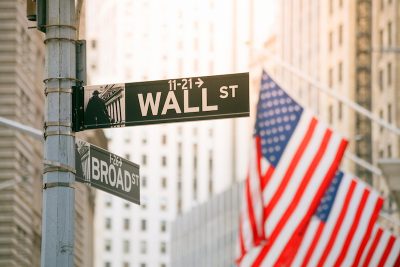I’m sorry, I just had to use the above stock photo for this blog. January is officially over. Blink and you would have missed it, but since the start of the year, stock markets have generally grown in value buoyed up by mostly better news. 2022 was the worst year ever for our managed portfolio returns and I have to admit I was glad to see the back of the year. Central banks sucking money back out of the system, supply chain issues caused by the CCP’s zero Covid policy and the war in Ukraine all arrived as a triple whammy.
So what has been on my mind since my last blog just before the Christmas break? Here goes in chronological order.
The Santa Claus Rally
Initially I was watching for a Santa Claus Market Rally. Many long term investors have seen and heard me mention this phenomenon before. Stock markets tend to experience above average performance over Christmas. This excess growth was first discovered in the 1970’s and comes as a welcome strong finish to a year. Investors desperately needed an uplift this year. However, rather than a warm, fuzzy fairy-tale experience, the truth behind the rally is a little more sinister. It really is more of a horror story if Santa doesn’t come. If the period doesn’t end well, we can normally forget any expectation of a good January.
“If Santa Claus should fail to call, bears may come to Broad And Wall,”
Yale Hirsch, founder of the Stock Trader’s Almanac

Did Santa arrive? Well he did but he made his sleigh ride very late on. The 5 trading days between Christmas and New Year ended badly, but the first two trading days of 2023 saw a bounce and the historic period did indeed end higher in most markets. The Santa banana skin was passed without a slip, but over much of the period, my expectations were of a resounding miss and therefore perhaps a wholesale run to safety across our managed portfolios.
January
For investor sentiment reasons, the first week is critical.
“As goes January….so goes the year”
Yale Hirsch, founder of the Stock Trader’s Almanac
Another observation repeated over many years, is known as the January Barometer.
The barometer’s record has been quite accurate. According to the Stock Trader’s Almanac, when the S&P had positive returns in the month of January, the average return for the year was 17.6% since 1950. The barometer has registered just eleven yearly errors over that timeframe, resulting in 84.5% accuracy.
If you look at last year our portfolios hit their peak during the first week, but fell from there. January ended badly and that fall continued right through the first 3 months with the first bounce occurring just before the end of the tax year. Then the second quarter fell, as did the third.
Seasonality
Again longer term investors will know we usually make most of our returns between October and May.
“Sell in May and go away….don’t come back till St. Leger’s Day”
The above adage refers to the custom of London-based aristocrats, merchants and bankers going to the ‘country’ to escape the heat of the city in the summer months and, instead of working, they would attend social or sporting events.
As a result of less trading, fewer stocks were bought or sold, so any sudden market sell-offs were amplified.
When we sell a share, someone has to be there to buy it. If there are a lack of buyers, the seller has to accept a lower price.. Even with the advent of automatic trading systems and high frequency trading programs, today there is still more market activity through the Northern Hemisphere winter months, than through the summer. The US version of the adage is “Sell in May and go away….come back Labor Day”.
Was October the Nadir?
I have my fingers firmly crossed here, but so far the bottom of this market correction looks to have occurred in October. Portfolio returns since then have slowly climbed every month since, bar a dip at the end of December, which has since been more than recovered over January. For 3.5 months the trend has been up.
So far so good.
- Text book Santa Rally
- Solid January
- Continuous trend up from October
Let’s hope the textbook trend continues through to at least May and hopefully beyond and indeed gives us a positive year after last year’s negative one. Statistically after such a bad year, the following year is usually overwhelmingly up.
Enough of the Optimistic Fairytales Please
OK. The above may sound like fairytales and folklore but remember investment is a deeply personal experience. It continually reveals our inner hopes and fears. Humans use heuristics (shortcuts) to work things out, so it isn’t surprising these old barometers still have some sway. But wait.. What could possibly go wrong?
Inflation and Interest Rates
Although it is now gradually being generally accepted that the worst of this bout of very high inflation is behind us, the expectation is that interest rates will continue to rise for a while longer. Thankfully the consensus amongst financial analysts suggest the next rate rise will be limited to just a quarter of a percent on both sides of the Atlantic. This is a welcome topping out, with central banks now proceeding with some caution. It is a balancing act not to push interest rates too far, which would plunge global economies into a deep recession. Trying to apply the brakes just enough to bring down inflation is tricky and usually results in economies coming to a full stop rather than just slowed down sufficiently. A deep recession was priced into markets last October, now not so much.
And What About Today’s IMF Statement?
For once I’m more or less in agreement with what the IMF suggest, that the UK will be slow out of the recovery traps. So slow that our economy will see a 0.6% dip in growth this year? Let’s just flip that fall over though, by their calculations they reckon the UK economy should maintain 99.4% of what was achieved last year, which by global standards was none to shabby.
I believe the US may dodge a recession, but if it does arrive, the US economy will be first out of recession and US share prices generally will begin to reflect that. So after waiting for the evidence to build, I’m now satisfied that the future finally looks brighter. I have therefore just completed a blanket portfolio rebalance and finally adjusted all of our managed portfolios to reflect a reduced UK bias by increasing our US holdings.
Do I have any faith in the recent projections offered up by the IMF? Not really. Along with many international organisations it is clear that they have been pretty woeful with their past projections, because like the rest of us they don’t possess a crystal ball. No individual is ever brought to book for getting their projections wrong, so there is little to fear about the accuracy of any projection.
There is also a little institutionalised “Anglo-Kicking” agenda about too. The last managing director of the IMF was no other than fervent UK lover, Christine Legarde. She was succeeded in 2019 by another lady who came through the same European Technocrat school*, Kristalina Georgieva. So no love lost there between them and the UK, over the last 5 years of Brexit.
*Previously, Ms. Georgieva helped shape the agenda of the European Union while serving as European Commission Vice President for Budget and Human Resources. The same period that the UK contributions to the EU budget began to be significantly reduced.
Is GDP a good proxy for a countries future stock market performance anyway?
In a word. No. Maybe I will return to a longer explanation of why a rising GDP isn’t necessarily or even usually a good indicator of future stock market performance another time.
For now – steady as she goes.

